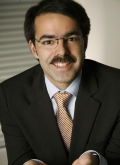
Project heads:
Prof. Dr. Michael Hintermüller
Project members:
Dr. Guozhi Dong
Duration: 01.06.2017 - 31.12.2019
Status:
running
Located at:
Humboldt Universität Berlin
Project heads:
Prof. Dr. Michael Hintermüller
Project members:
Tobias Keil
Duration: -
Status:
completed
Located at:
Humboldt Universität Berlin
Project heads:
Prof. Dr. Michael Hintermüller
Project members:
-
Duration: 01.07.2013 - 30.06.2016
Status:
completed
Located at:
Humboldt Universität Berlin
Project heads:
Prof. Dr. Michael Hintermüller
Project members:
-
Duration: 01.05.2011 - 31.03.2018
Status:
completed
Located at:
Humboldt Universität Berlin
Project heads:
Prof. Dr. Michael Hintermüller
Project members:
-
Duration: 01.10.2014 - 30.06.2022
Status:
running
Located at:
Humboldt Universität Berlin
Project heads:
Prof. Dr. Michael Hintermüller
/
Prof. Dr. Alexander Mielke
/
Prof. Dr. Thomas Surowiec
/
Dr. Marita Thomas
Project members:
Dr. Lukas Adam
/
Dr. Dirk Peschka
Duration: -
Status:
completed
Located at:
Humboldt Universität Berlin
/ Weierstraß-Institut
Project heads:
Prof. Dr. Michael Hintermüller
Project members:
Dr. Soheil Hajian
Duration: 01.06.2017 - 31.12.2018
Status:
completed
Located at:
Humboldt Universität Berlin